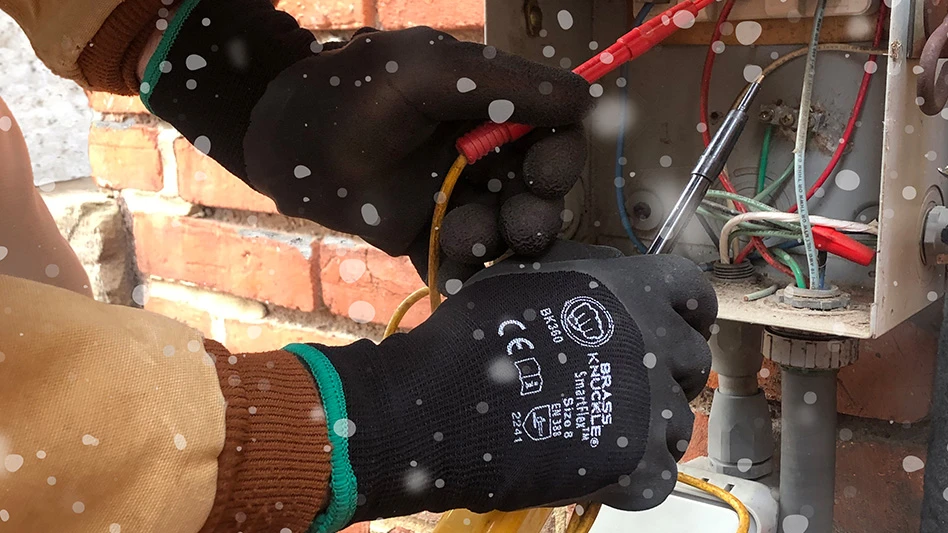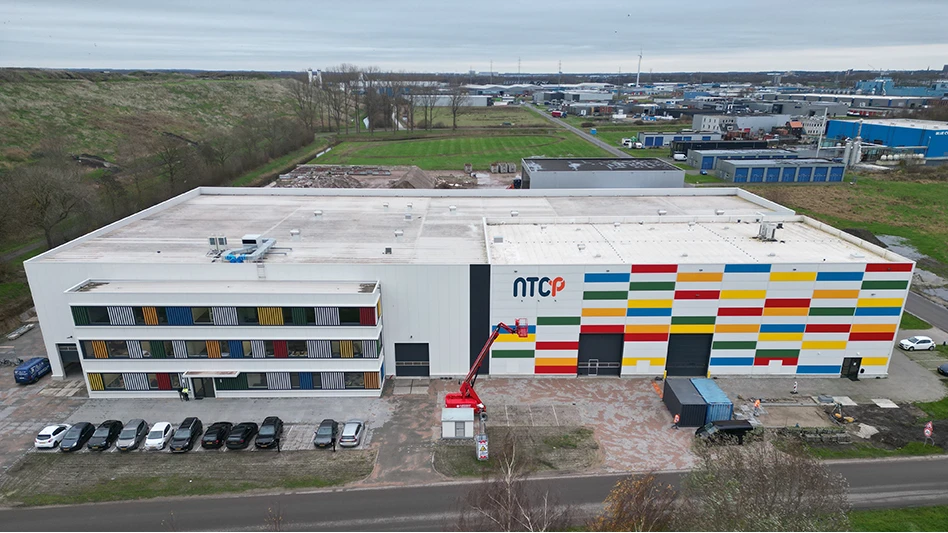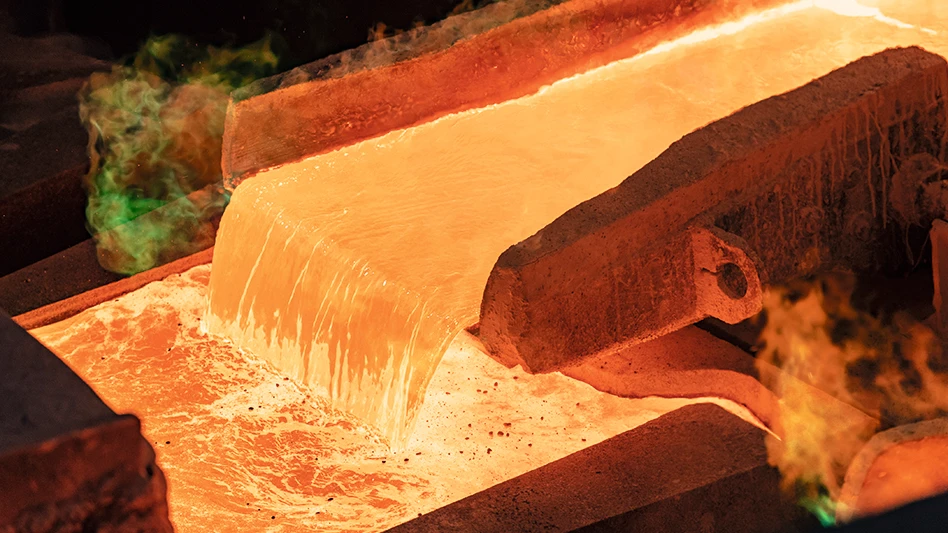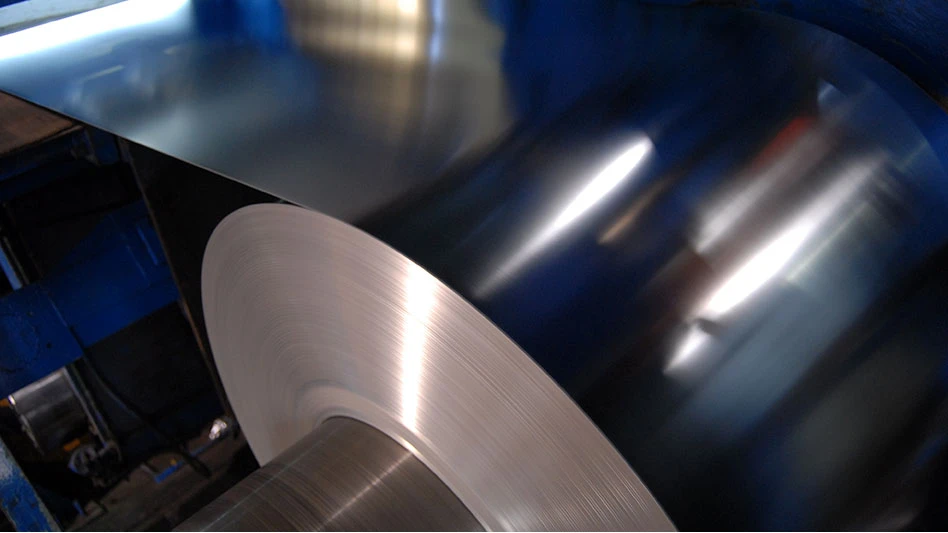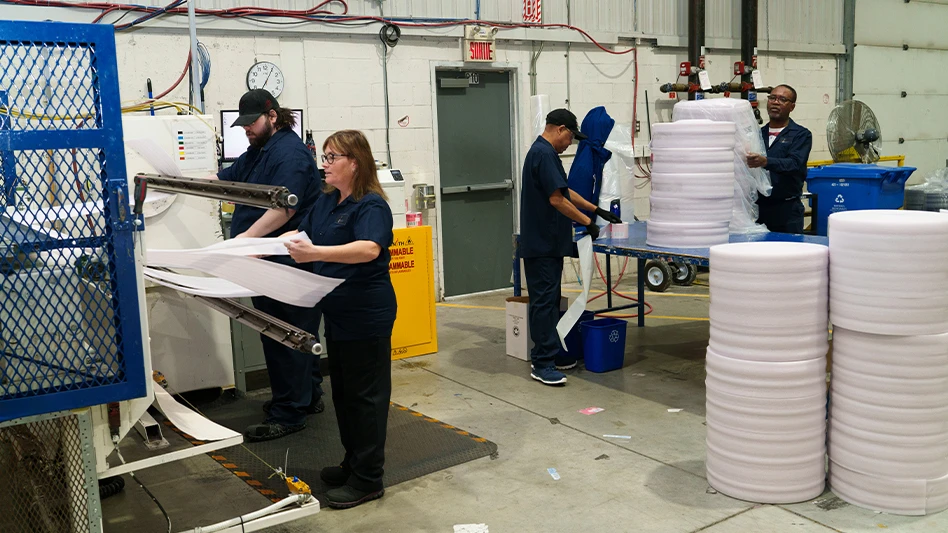When ferrous scrap prices increase, many processors have a line of trucks waiting to be weighed. Tonnage from the street trade soars as small-time collectors seek out obsolete scrap to bring to processing yards. This complements the steady volume of industrial scrap that comes across the scale.
During times of low pricing, the inverse takes hold. The flow of material declines, causing a pinch for many scrap processors who rely on street and peddler traffic for a large portion of their supply.
Many scrap processors are having to take extraordinary steps to ensure they obtain the supply of material that is needed to make their yards successful. From sending out equipment to more aggressively pull in material to reducing their operations, the steps companies are taking are significant. And, with market doldrums expected to last for a while longer, these adjustments may remain in effect into this summer.
A MARKET SNAPSHOT
As of this writing, there is very little doubt about the ferrous market. Prices are down significantly from one year ago. The short-term outlook, while less bleak, does not call for any sudden increases. Many processors forecast a market moving sideways for the next several months. A lack of any substantial price improvement would force more scrap processors to make changes in their operations.
There are expectations of a turnaround by some, however. But while a number of vendors feel markets will start to improve within the next several months, a handful stretch out any recovery timeline until as far away as 12 months.
The order books at consuming mills may be improving. With the recent decline in the import of finished steel products, there are expectations domestic steel production could increase. This will likely improve the flow of ferrous scrap to domestic sources. Will this be enough to spur a rise in ferrous scrap prices?
Inevitably, the drop in imports will be a positive for U.S. scrap processors. A question is when the reduction in steel imports will translate into stronger domestic mill production. The opinion expressed by a host of scrap processors is that the situation won’t be remedied for another six months, translating into continuing sluggish markets for most of this year.
The situation appears to be most acute with auto shredders, who rely on a steady flow of auto hulks through their machines to cost-justify the expense of the shredders.
In the current market, many auto dismantlers are forgoing steady shipments of auto hulks due to slack prices for the material. The drop in street price is a great concern for many auto shredders. The initial result is a number of shredders closing down, some announced as temporarily, while with others it is unclear. To keep running, many auto shredders that continue to operate have to be proactive in their overall business.
The hauling of white goods (appliances) to scrap yards is also down. With the low prices being offered, one processor notes many dealers are not picking up appliances. “We used to see the appliances lining the street,” he adds.
Adam Weitsman, with Ben Weitsman & Son, Owego, N.Y., says his company has addressed many of these problems through aggressively courting suppliers. “We are trying to increase our customer service. We have added more than 1,000 roll-offs that we drop off at various locations.”
Weitsman explains that this move is more likely to encourage auto dismantlers to give their company a steadier supply of material. Even with low prices, making it easier for the dismantlers to move their vehicles to the shredder could be the necessary encouragement to have the material come through the door.
“If you drop off a container, people who were holding it might free it up,” Weitsman says. With the company picking up the auto hulks themselves, it gives the company more material to feed to its machine.
Along with the pick-up of auto hulks, another move Weitsman & Son feels has benefited them in difficult markets has been the ability to create “special terms” for some of its customers. Shortening the payment period is one step that some find beneficial.
Not everyone, however, feels the drop in ferrous prices is causing a sharp drop in scrap generation. Stuart Simms, Parkwood Iron & Metal, notes that movement still remains fairly stable, although a concern is more with street traffic, rather than contract business.
While street trade is most susceptible to scrap price declines, one advantage a company can create is its ability to get the seller in and out in a quick period of time. “We are one of the only yards in the area that has a digital readout,” Simms says.
Also, while markets are somewhat sluggish, “you have to know what your competition is paying.”
While keeping on top of the business, especially in a down market, is essential, Simms points out that a seller has chosen a particular company due to a business relationship. This relationship will help carry a company through with its customers.
PRICE: THE ULTIMATE MOTIVATOR
Customer service approaches such as sending roll-offs to the generator, paying more quickly, and working more closely with the collectors are all strategies helpful toward maintaining an adequate flow of material through a scrap yard. However, most processors are unanimous in saying the biggest motivator is the price of the scrap.
With price as the ultimate arbiter of across-the-scale traffic flow, lower pricing simply means the level of street trade will diminish. Trying to change this “natural law” can be very difficult. Raising prices would likely bring more material through a scrap processor’s gate. However, narrowing the margin during a time when movement is still somewhat sluggish would just shave even more from a processor’s spread. When end consumers don’t raise their prices, the added cost is borne by the scrap processor.
Vendors contacted all agree that increasing the price of the scrap will do more for bringing scrap through the door, but most also say they are reluctant to take such unprofitable measures.
One vendor notes that only recently have some of their accounts been “bleeding” out some material, while continuing to warehouse the rest of the material. This strategy continues to hamper many scrap processors, especially those companies operating capital intensive pieces of equipment.
Large auto shredding equipment carries a significant price, and must produce a steady flow of revenue-generating material in order to pay for itself. But, with many auto dismantlers holding onto auto hulks for a longer period of time, problems are being created for shredder operators. While the dismantlers hold their cars for a longer time, they cut off needed feedstock for shredder operators, thus hurting their cash flow. Further, the dismantlers are able to sell more of the car parts in the interim before the hulks are finally shipped to the auto shredding yard, thus generating less scrap once they do reach the shredder. So not only is the flow of material declining due to prices, the amount of usable material on each car is reduced.
Glen Yaffe, with Yaffe Iron & Metal, Fort Smith, Ark., sees declines across the board with peddler traffic. Yaffe estimates that street trade is off by around 30% over the first two months of the year. He sees the decline in price as the main reason for the slide. Despite any relationship between supplier and the scrap yard, it always comes down to the price. “And, unless you narrow your margins, there isn’t much you can do about it,” he adds.
Yaffe also has an auto shredder yard. He points out that their company is seeing a slowdown in the volume of cars coming though their yard, but he is not as certain whether more parts are being pulled off each car. He does note that newer automobiles are incorporating more plastics, aluminum and other non-ferrous metals, reducing the amount of ferrous scrap available.
One Midwestern auto dismantler says that due to the continuing price problems, his company has been holding onto its automobiles. Instead of selling cars in smaller increments, he is opting to hold onto his car supply. He estimates that he may end up with more than 1,300 auto hulks on his property before he will sell off the cars.
While the trend by some smaller scrap collectors toward inventorying material is taking place, not everyone feels the trend will last. Simms feels that smaller companies “generally don’t have lots of room to inventory.”
A host of shredders have closed, some citing slower than expected business as the reason for the decision. Even companies that have opted to keep their shredders open are taking more downtime for maintenance. One vendor says that the move is being done so when markets come around the equipment will be able to be maximized.
Scott Wilhelm, with Youngstown Iron & Metal, Youngstown, Ohio, says that when the company saw that orders were thin, it opted to take its auto shredder offline to perform maintenance. This allows the company to run better schedules when markets start to improve.
David Rose, vice president of Rose Metal Recycling, Houston, Tex., says their company has seen a dip in the amount of auto hulks that come through the door. While there are steps that can be taken to maintain a flow of material, the overall situation is driven primarily by price. “We don’t see it doing much. While we are doing alright, we are taking some downtime.”
RELATIONSHIPS – WHERE DO THEY STAND?
A mantra of scrap processors has always been that relationships built up between the scrap processor and generator, whether an industrial account or via street trade, were vital. Many of these relationships have gone on for years, with some going for generations. However, with the sharp price declines for ferrous scrap seen over the past several quarters, a number of vendors see some strains developing between the processor and the generator.
The price decline is not readily comprehensible to all components of the scrap recycling industry. Rose says most, but not all, generators are understanding about the situation. “I wouldn’t say everyone understands the problems in the market.” He feels the people most anxious about the condition are “people who don’t watch the market that closely.”
While concerns about declines in supplies have put a damper on the business, Rose, as well as others, think there is a point when people start to get used to markets being down and make adjustments in their business.
A buyer in the mid-South region notes that his company is getting more involved in better marketing strategies to bring material through their gates. While marketing strategies are a help, he adds, “These guys (collectors) are real price sensitive. You have to do quick pay to keep the accounts.”
Business continues, regardless of the market conditions. Sooner or later, one scrap processor comments, all components of the ferrous scrap market will come into balance. Another scrap processor, located in the Northwest, notes “Most guys have been through this before.” He points out that many of the companies most damaged by market conditions are companies who have not been careful with their balance sheet when markets were good, and are having a difficult time adjusting with down markets.
The many variables make forecasting a challenge. Asian markets will have to improve, Brazil will have to become a bigger factor, and imports of steel into the United States will have to decline.
Some of those contacted believe that for those companies with the foresight (as well as the financial ability) to do so, present markets make for an ideal time to strengthen their business. Whether through acquisitions, adding new machinery or increasing the account base, some such steps may well pay off for processors when markets start to improve.
One company that has used the prolonged slump to make some moves to improve its future growth is Schnitzer Steel Industries Inc., Portalnd, Ore.
Tom Zelunka, a spokesman for Schnitzer Steel, a steelmaking and scrap recycling company, says that while there have been some changes in market supplies, Schnitzer has engaged in a number of cost reductions to take advantage. “We were aware early of the Asian crisis. While some folks in the industry felt it was a ploy to get better prices, it allowed us the opportunity to achieve improved efficiencies. Some of these steps include adjustments in employee staffing and operational hours.”
While these obvious moves have been made, the company also is seeking improved efficiencies through better, more effective equipment.
While cutting overhead is an obvious strategy, the company has also made some significant capital investments that the company expects will improve its bottom line. The largest is the installation of an auto shredder at the company’s Tacoma, Wash., facility. Plans call for the shredder to be operational this summer.
Shaving costs from day-to-day operations is the quickest way to lower costs and maintain margins. While an easy decision to make, the strategy is not always the best one. Cutting costs, including staff, often gives a short-term benefit to a company. However, longer term problems could crop up. Markets for ferrous scrap will improve, whether it is the second half of this year, next year or longer term. When things do turn around, those companies that have cut to the bone may have a more difficult time ramping up.
A host of vendors feel that while paring back expenses is necessary at times like this, a more prudent approach is to take the slow market as a time for improving the general operations of the scrap facility. Keeping in constant dialog with suppliers is one step to take. While suppliers may be unhappy with the prices being offered for scrap, the need to keep suppliers up to date on where markets are is important to maintain long-term relationships.
STEPPING AROUND
One concern that could arise is if a scrap generator looks at circumventing a scrap processor, and opts to work directly with a mill or a broker. While this is often a tricky proposition, it may create some questions about the role of the scrap processor.
One advantage that processors hold is that they often have the capabilities of processing the collected material into a more viable format, something a broker may not want to deal with. If this is the case, a generator must go to a facility that is able to process the material.
Also, as Simms notes, many generators, especially demolition contractors, do not have the excess space to hold material. “They want the material in and out.” Because of the volume of material they may handle, it becomes difficult to sit on a sizable amount of material without moving it, regardless of price.
Not everyone is as convinced that the decline in price has had a negative impact on supplies. Despite lower prices, industrial accounts need to move tonnage on a daily basis. In this particular down market, the generation of industrial scrap has remained fairly stable. Zelunka is one who feels that current market conditions haven’t sent sizable amounts of ferrous scrap into hiding.
Even for street trade accuonts, there are only a limited number of options available. While storing material until prices improve is one strategy, many of these scrap sellers have only a modest amount of storage space. And, with indications that the price problems could continue for several more months, many of these would-be hoarders are having to let out some material for the cash flow.
The author is senior editor of Recycling Today.

Explore the May 1999 Issue
Check out more from this issue and find your next story to read.
Latest from Recycling Today
- Nucor names new president
- DOE rare earths funding is open to recyclers
- Design for Recycling Resolution introduced
- PetStar PET recycling plant expands
- Iron Bull addresses scrap handling needs with custom hoppers
- REgroup, CP Group to build advanced MRF in Nova Scotia
- Oregon county expands options for hard-to-recycling items
- Flexible plastic packaging initiative launches in Canada
